New BMW i7 emphasises passenger comfort and entertainment above all else
The BMW i7, the brand’s first pure electric saloon car, is traditional in shape, awkward in detail, and a simply excellent place to sit

There are plenty of ways that the most plutocratic of automobiles can signal their emphasis on the driven, not the driver. There’s the division screen, of course (a Rolls-Royce favourite), as well as the sumptuous, first class-style reclining chairs that set Maybachs and Bentleys apart from the ‘standard’ bench seat. The new BMW i7 has neither of these. Instead, it has the largest rear screen ever installed in a production car.
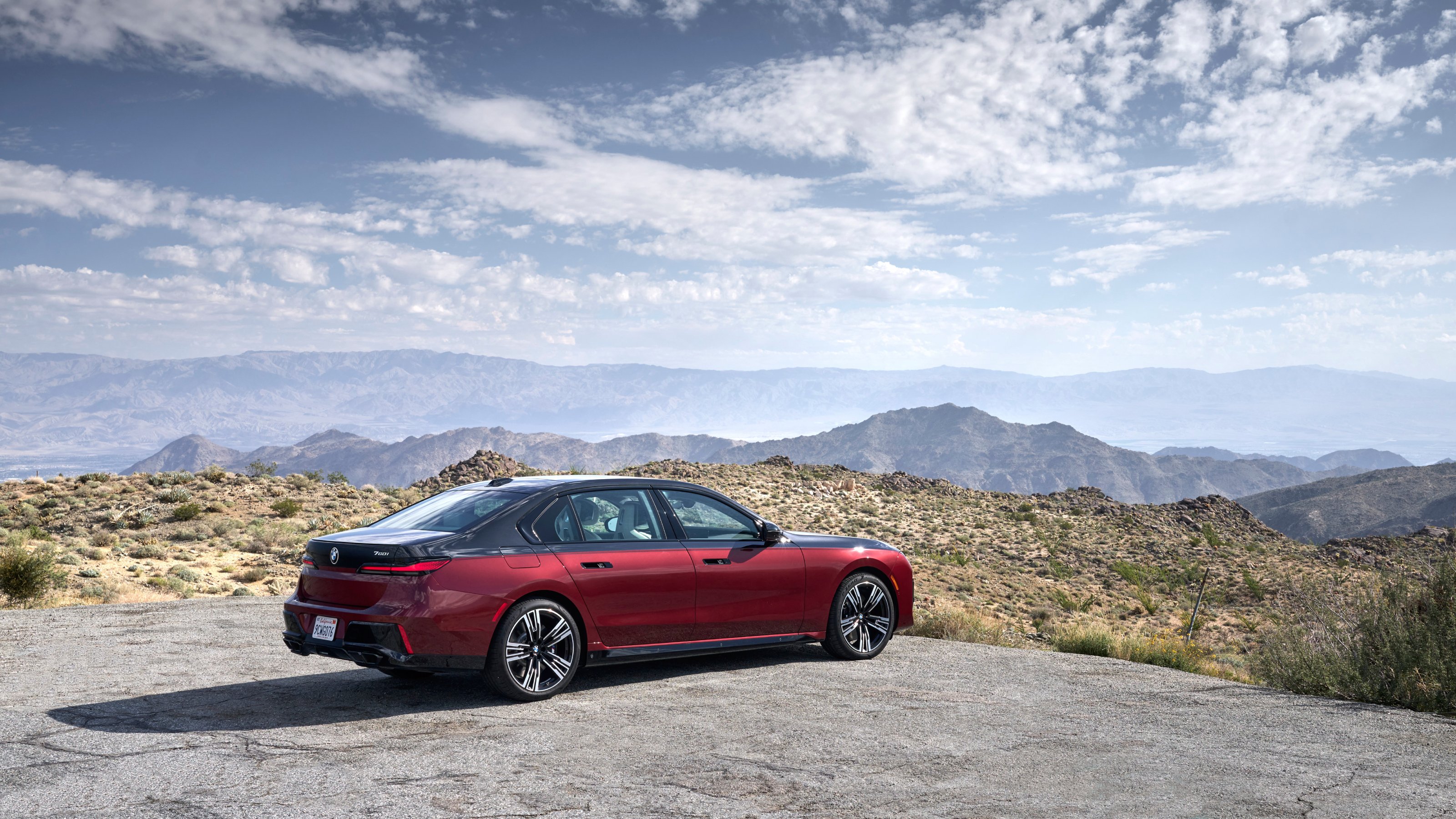
The BMW i7 marks another premiere for the Bavarian car builder. It’s the first time an all-electric powertrain has gone into a traditional saloon-style body. Up to this point, BMW has focused on electric SUVs, as well as the i4 ‘Gran Coupé’. The i7 won’t hold this distinction for long, as the new i5 saloon has just been announced.
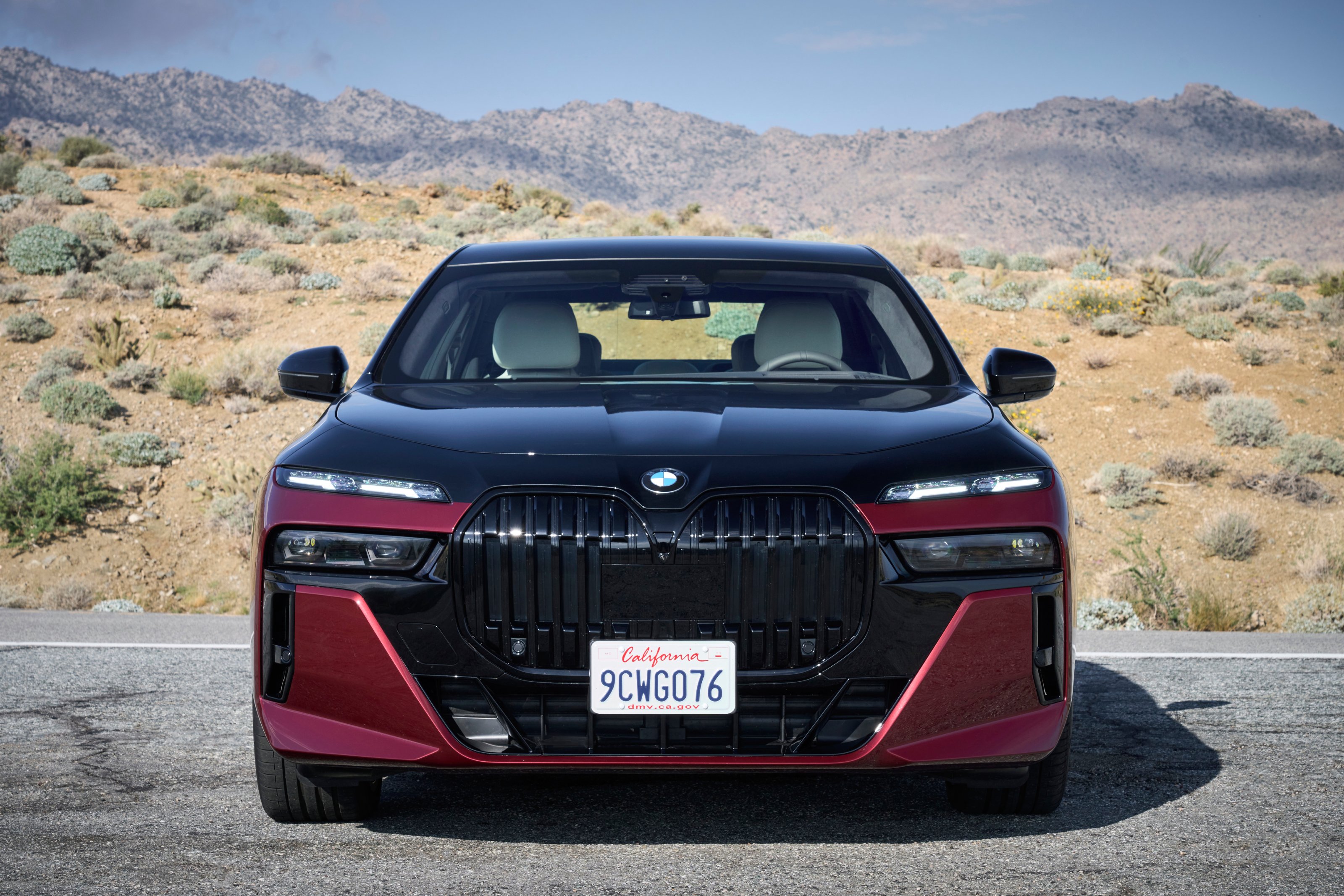
The 7-Series is the brand’s traditional flagship, first introduced in 1977. A rival for Mercedes’ well-established S-Class the 7-Series followed the same top-down technological flow; any innovations make their debut in these prominent models before gradually percolating through the range. In BMW’s case, that first ever 7-Series included such exotic items as an onboard computer, anti-lock brakes, and even a dictaphone.
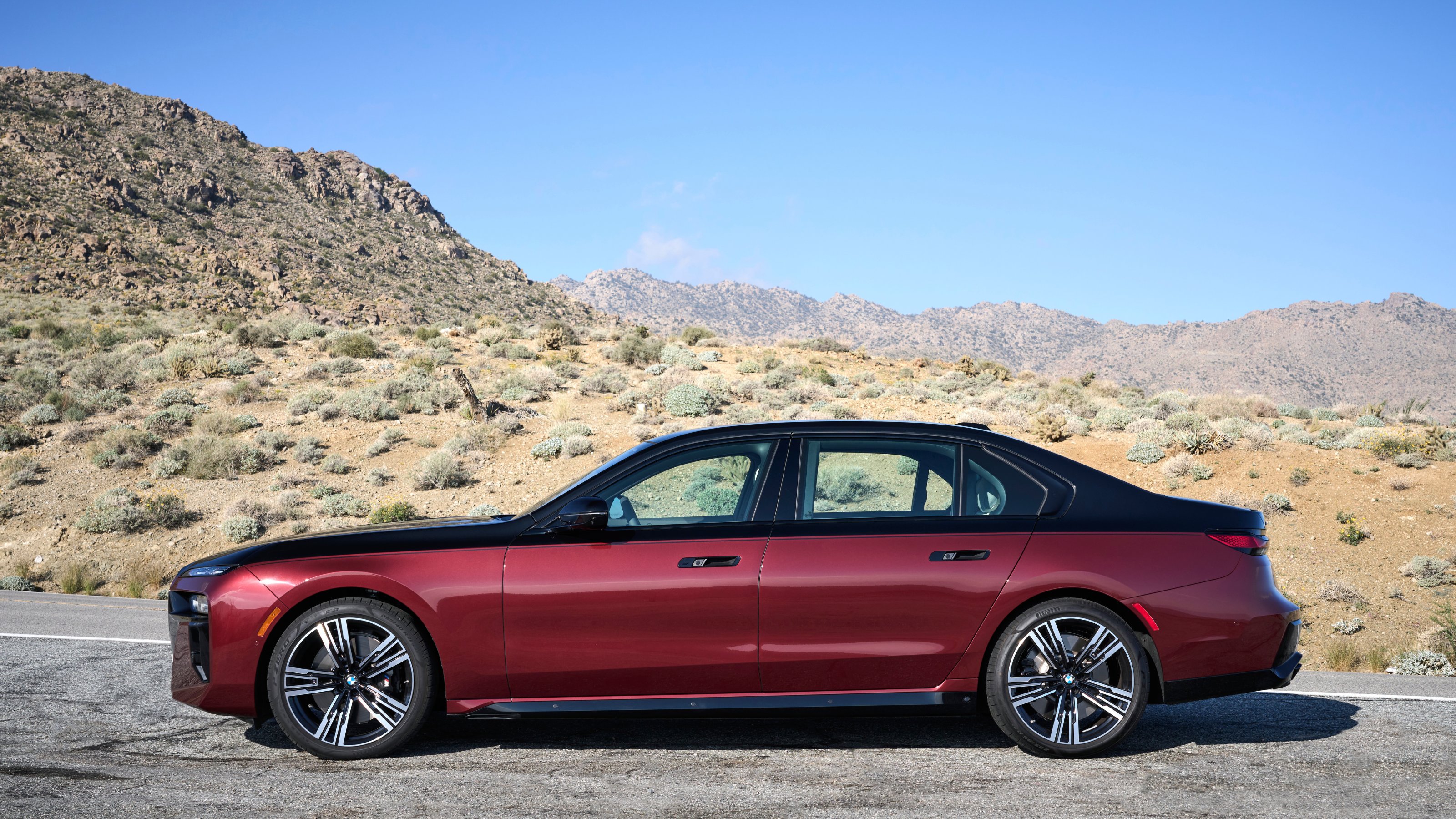
Seven generations later and the big 7 has reached a fork in the road. Just like Mercedes, which is hedging its bets between a hybridised S-Class and the all-electric EQS, BMW believes that the time isn’t quite right for the chauffeured classes to go all-electric, all at once. Unlike Mercedes, BMW is building the i7 alongside an almost identical ‘regular’ hybrid car.

Despite converging EV and ICE styling, it pains us to report that the i7 is not a thing of great beauty, even (especially?) with its optional two-tone paintwork. BMW design can make a virtue out of brutishness, a strategy that sometimes pays off in the long run as tastes change and the avant-garde bubbles up into the mainstream. Yet where the i3 and i8 combined asymmetric forms and unconventional panel alignments to great effect, more recent models have struggled with the blend of esoteric detailing and conventional proportions.

On the other hand, BMW’s current approach to interiors is far more satisfactory, even if there are still too few physical buttons for our tastes. There’s an emphasis on pattern and texture, with everything from fascia inlays to speaker grilles creating an interesting and unusual surface, while the lighting and materials (premium cloth is available as an alternative to leather) setting up a warm and cosseting interior that doesn’t feel too dominated by screens.
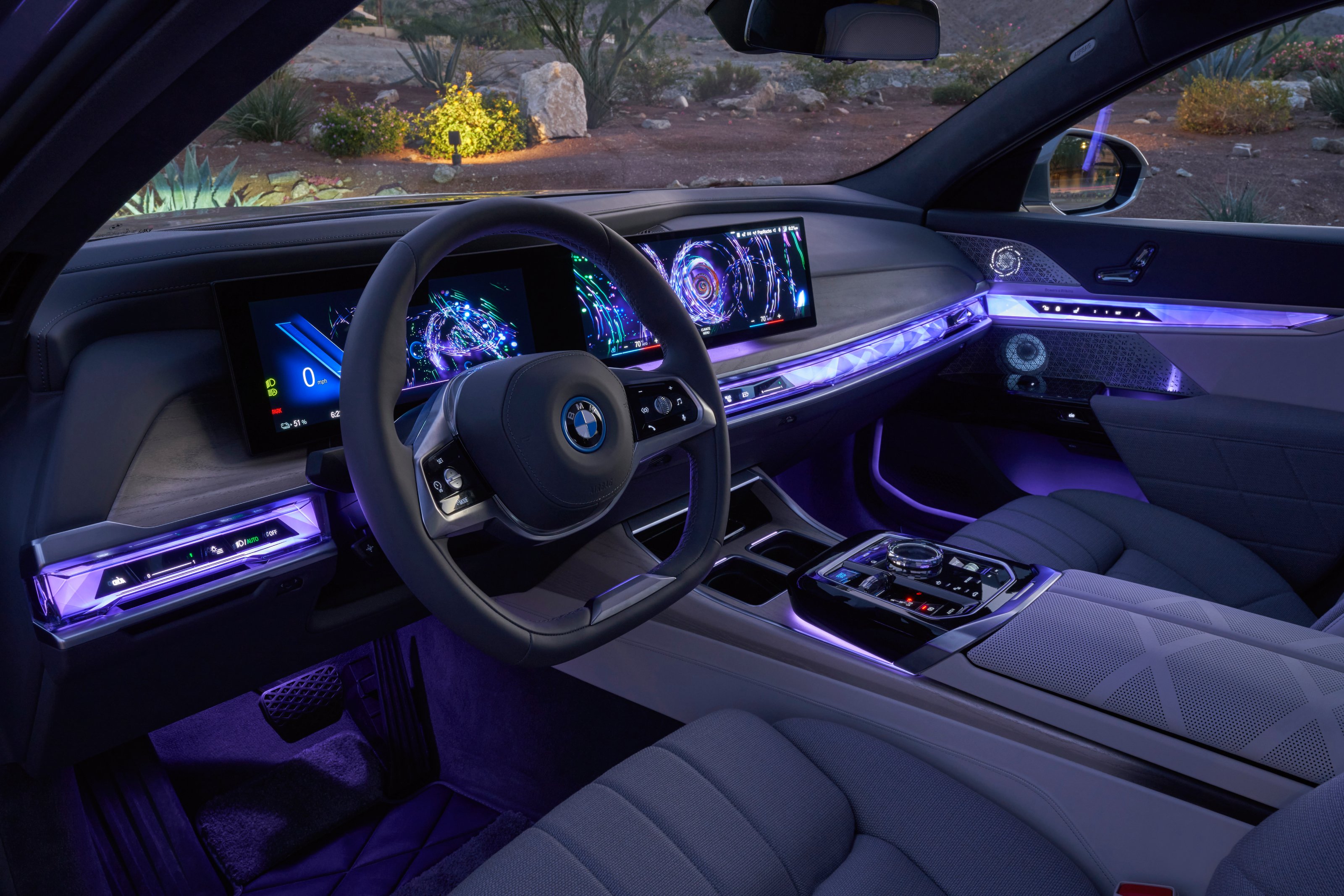
Electronics are still doing a lot of the heavy lifting, particularly in the plethora of lighting modes that give the interior what BMW calls a ‘luxurious lounge atmosphere’. In practice, this means swirly graphics on the central screen, soft ambient tones and hidden LEDs casting a variety of hues from behind and beneath practically every surface, from the crystalline dashboard inserts to the pattern inset on the roof glass.
Receive our daily digest of inspiration, escapism and design stories from around the world direct to your inbox.
BMW i7 electric saloon and its 31.3in ‘theatre screen’
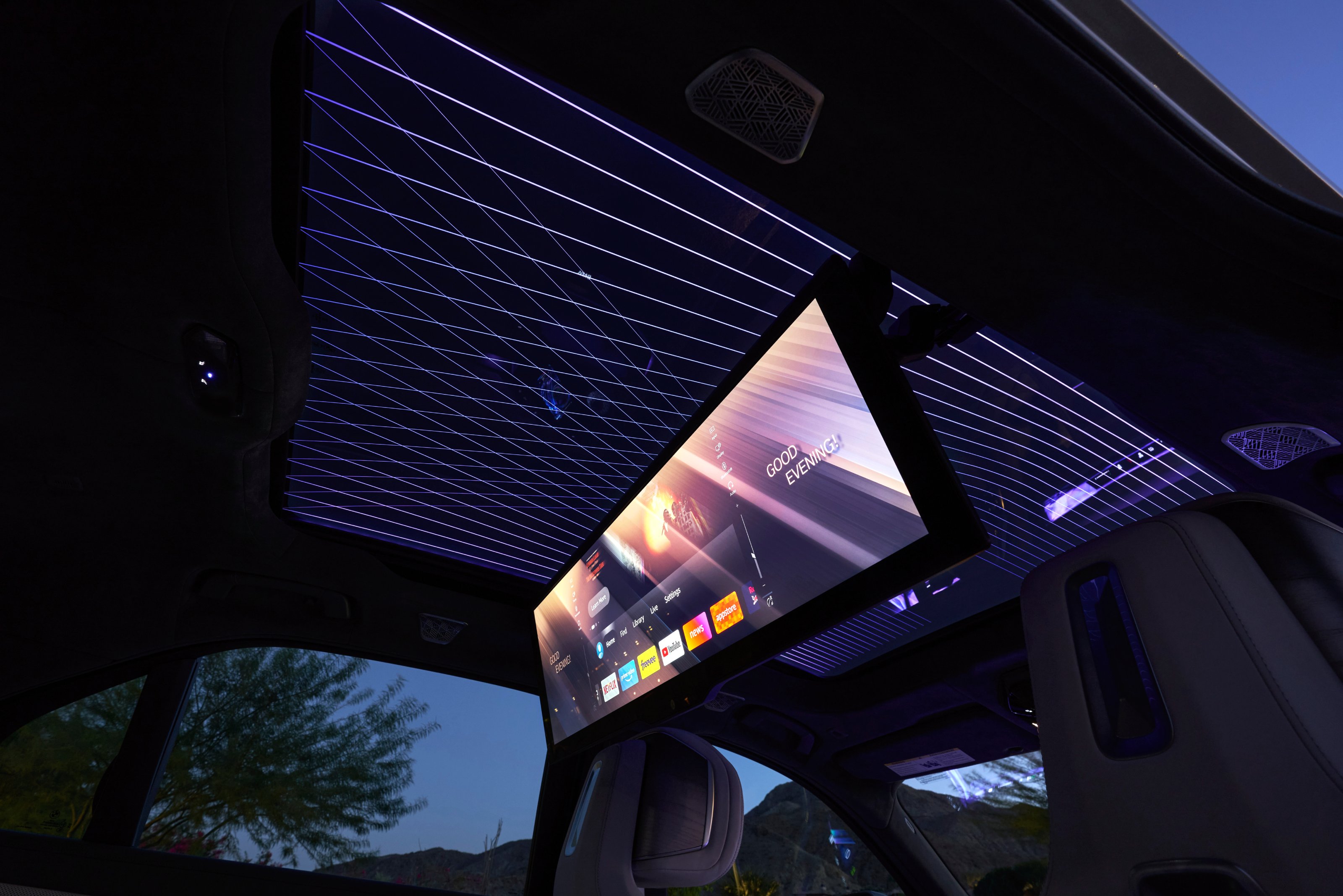
As already noted, the i7’s pièce de resistance is the ‘Theatre Screen’, an optional extra that gives rear passengers a fold-down 31.3in widescreen display. The screen, available as standard on the Excellence Pro and M Sport Pro models, is also available as a £4,400 extra across the i7 range.

With 8k resolution and touch-operation, it also has an HDMI input for computers, games consoles and Apple TV, with Amazon’s Fire TV system baked in. Each passenger has a touchscreen built in to the rear door to help them navigate this brave new world. Switch the system on, and you’re greeted with a short order of Hans Zimmer’s trademark cinematic pomp, as the rear blinds rise in sync with the vast screen’s descent.
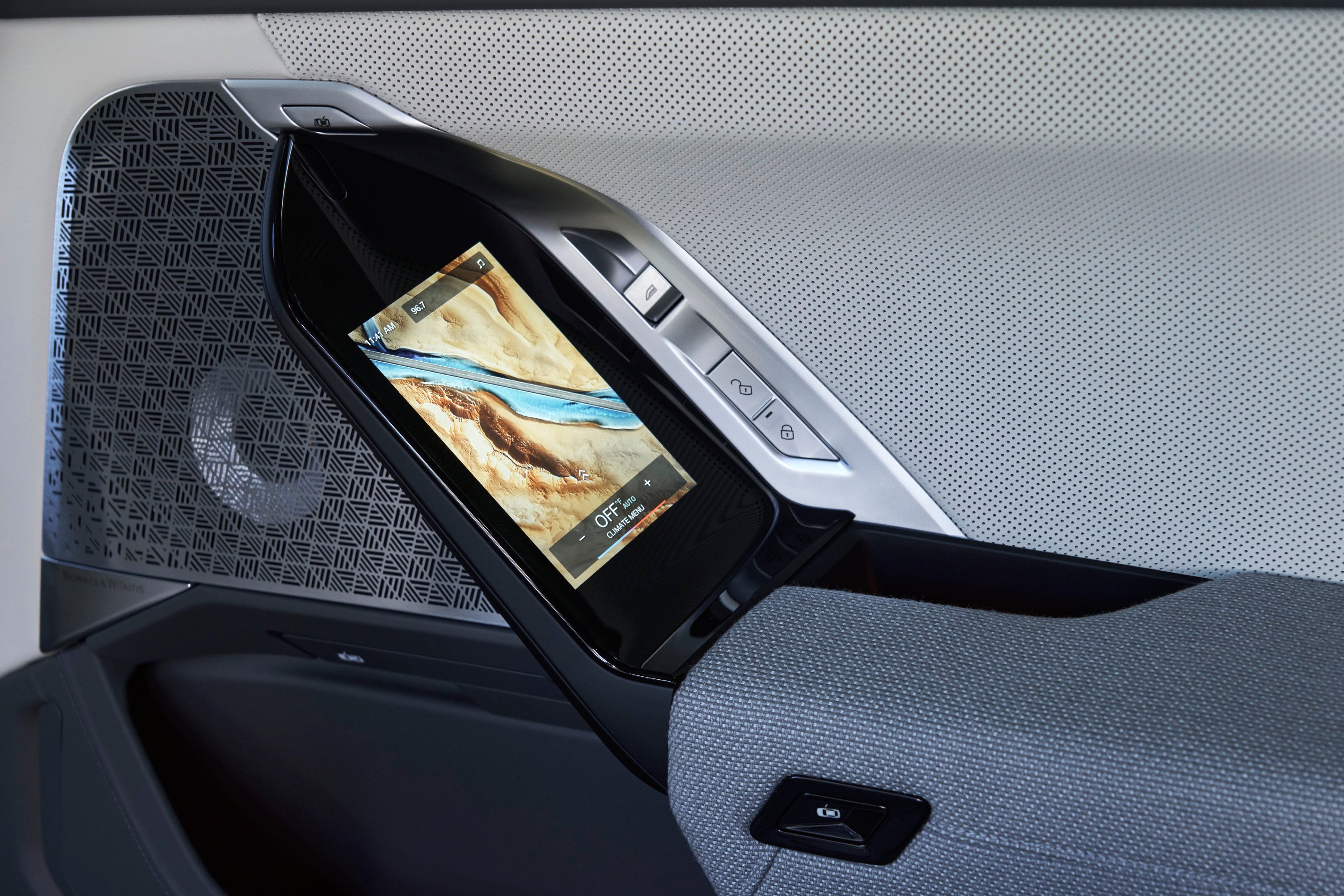
The i7 has a lot of tech to take on board, but as your familiarity with the car grows, you’ll be increasingly on speaking terms, as many of the operations are more easily spoken as commands than activated through the screens – ‘close the blinds’, ‘lower the screen,’ and so on.
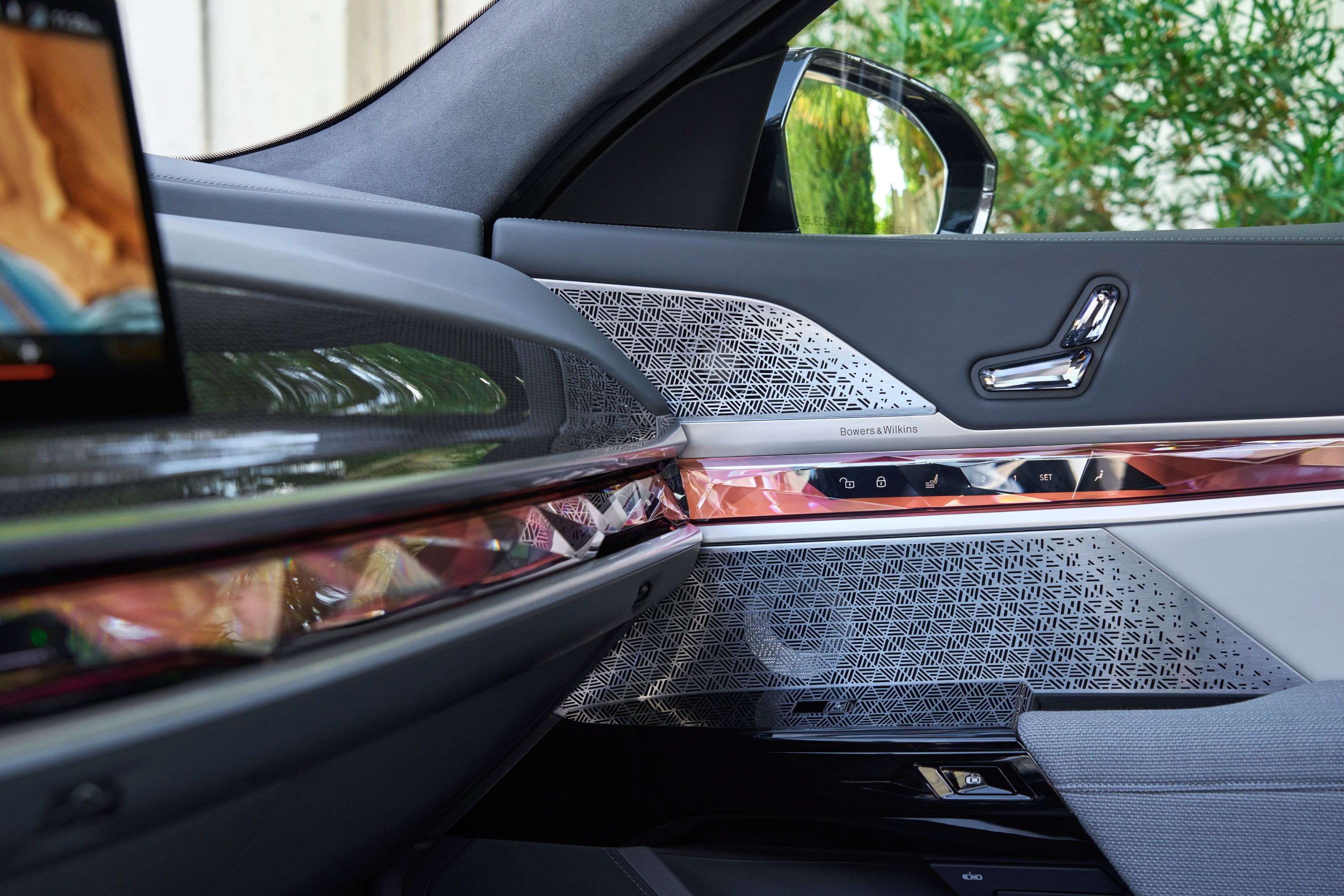
It’s a big car – 5.4m long – so the array of sensors, self-parking systems and optional four-wheel steering are all hugely welcome. Scale also means a sizeable battery pack, with an official range of between 360 and 387 miles, depending on the specification. That means a realistic real-world range of 300 miles, which staves off range anxiety on all but the longest of journeys.
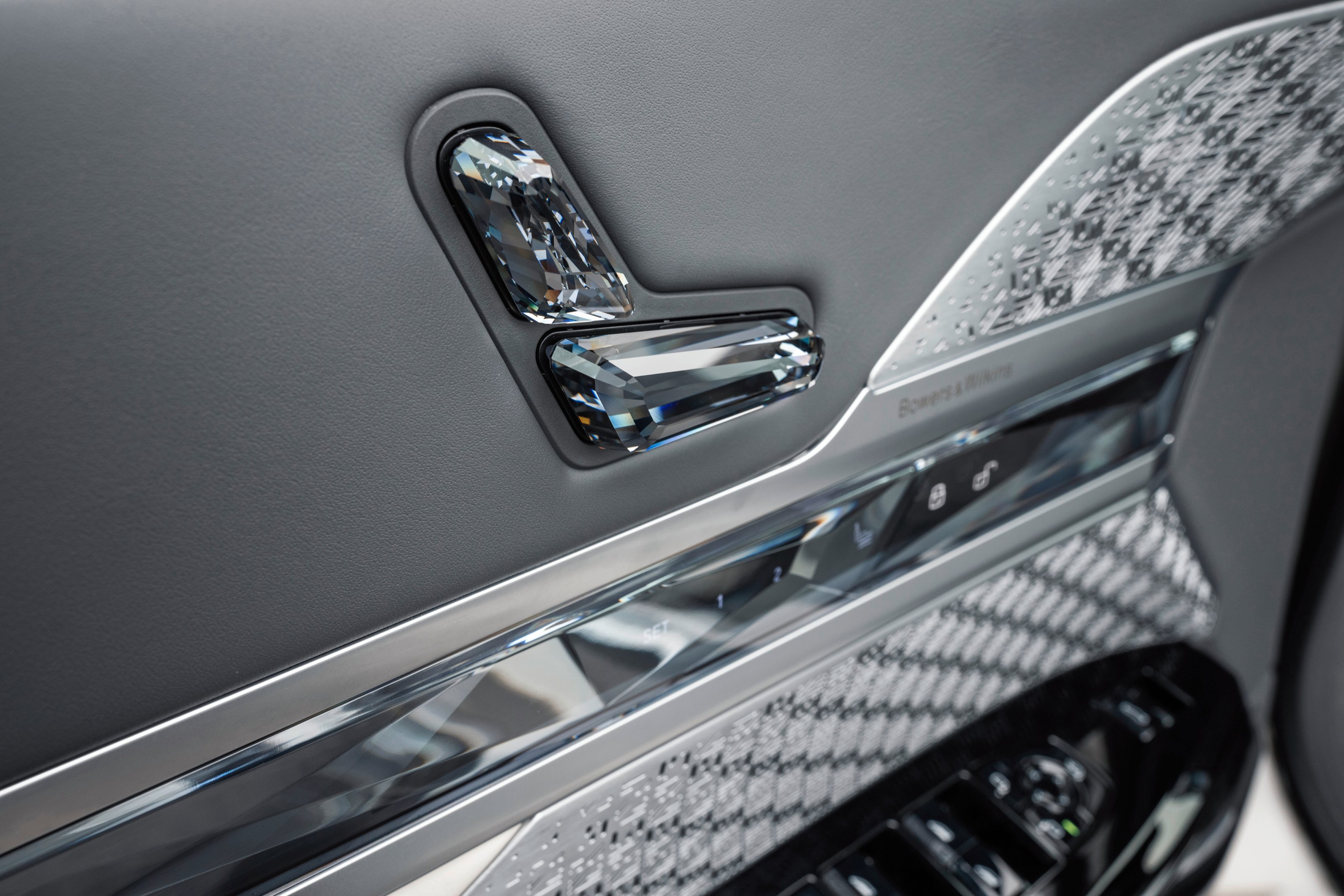
The powertrain puts out 400kW (equivalent to 544hp), so a sub-five-second sprint to 60mph is easily attainable, with all-wheel drive keeping the car sure-footed at all times. There’s also an i7 M70 variant, which has been given the once-over by BMW's M Sport Division, shaving a second off the sprint time and with more responsive, tighter steering.
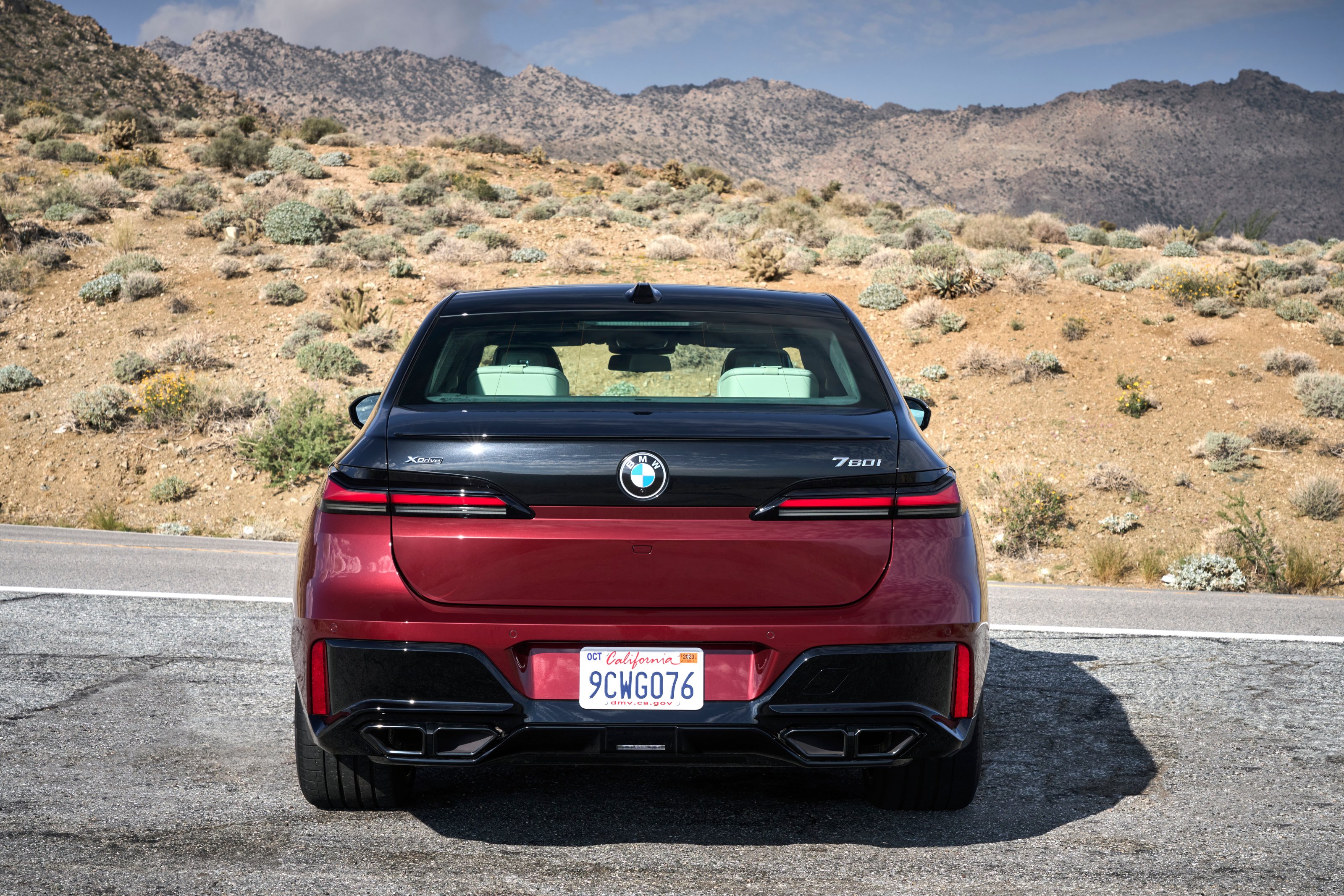
BMW’s famed tagline, ‘the ultimate driving machine’, matters less in this tiny niche of chauffeured isolation. Whisper-quiet and uncannily smooth, the i7 does a superb job of blotting out the outside world and making a journey speed by. Your only problem is to decide what to watch.
BMW i7 xDrive60 Excellence, from £113,970, BMW.co.uk
Jonathan Bell has written for Wallpaper* magazine since 1999, covering everything from architecture and transport design to books, tech and graphic design. He is now the magazine’s Transport and Technology Editor. Jonathan has written and edited 15 books, including Concept Car Design, 21st Century House, and The New Modern House. He is also the host of Wallpaper’s first podcast.
-
 Korean designer Yoonjeong Lee tells ordinary stories in extraordinary ways
Korean designer Yoonjeong Lee tells ordinary stories in extraordinary waysWallpaper* Future Icons: Yoonjeong Lee's work is based on a fascination for utilitarian objects, from pencils to nails, recreated with innovative casting methods
-
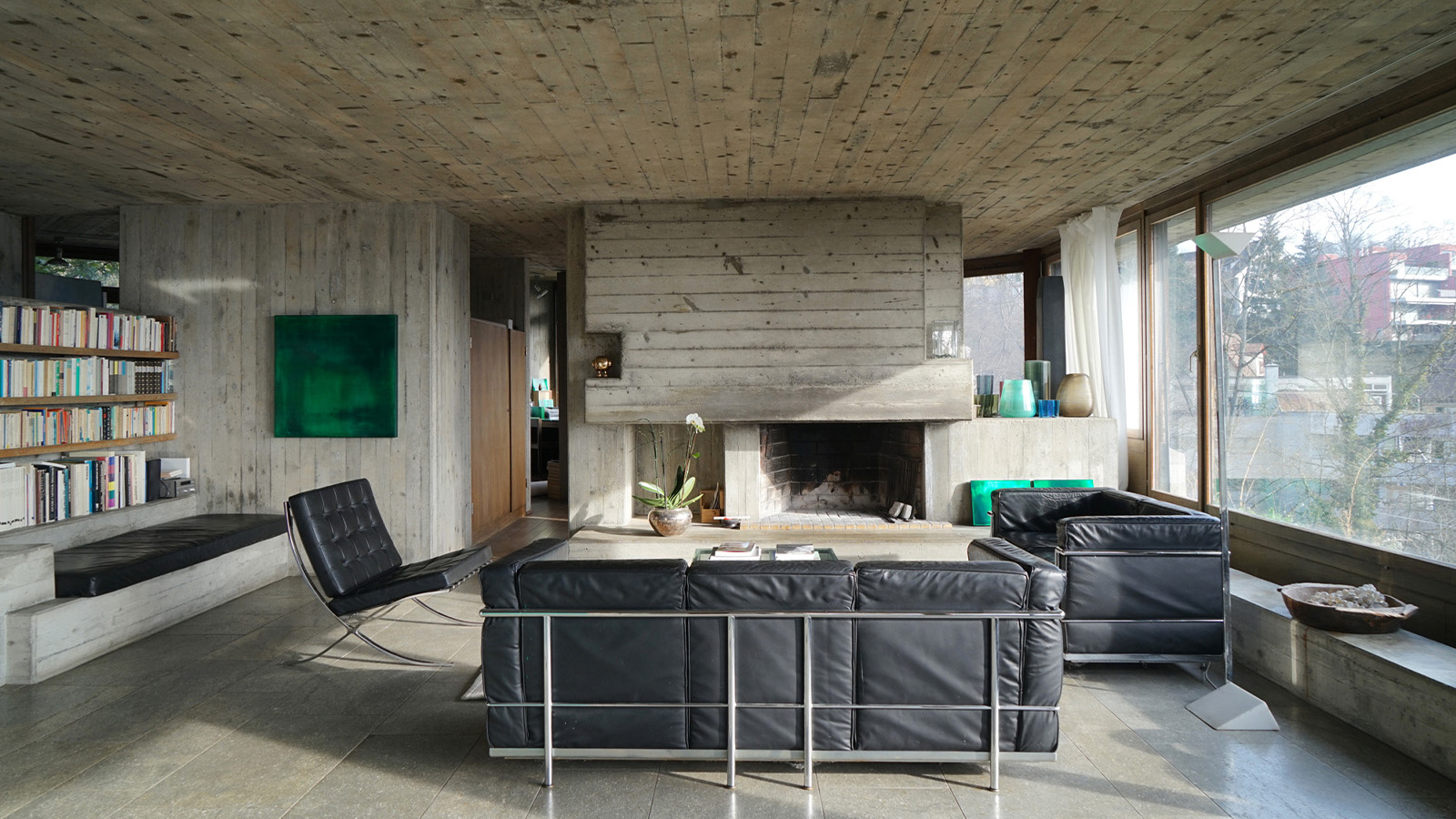 Inside architect Andrés Liesch's modernist home, influenced by Frank Lloyd Wright
Inside architect Andrés Liesch's modernist home, influenced by Frank Lloyd WrightAndrés Liesch's fascination with an American modernist master played a crucial role in the development of the little-known Swiss architect's geometrically sophisticated portfolio
-
 Volvo’s quest for safety has resulted in this new, ultra-legible in-car typeface, Volvo Centum
Volvo’s quest for safety has resulted in this new, ultra-legible in-car typeface, Volvo CentumDalton Maag designs a new sans serif typeface for the Swedish carmaker, Volvo Centum, building on the brand’s strong safety ethos
-
 All the new electric cars and concepts revealed at Munich’s IAA Mobility 2025
All the new electric cars and concepts revealed at Munich’s IAA Mobility 2025Munich’s alternative motorshow is now in its third iteration, combining a traditional exhibition space with a conference and large-scale public activations on the streets of the city
-
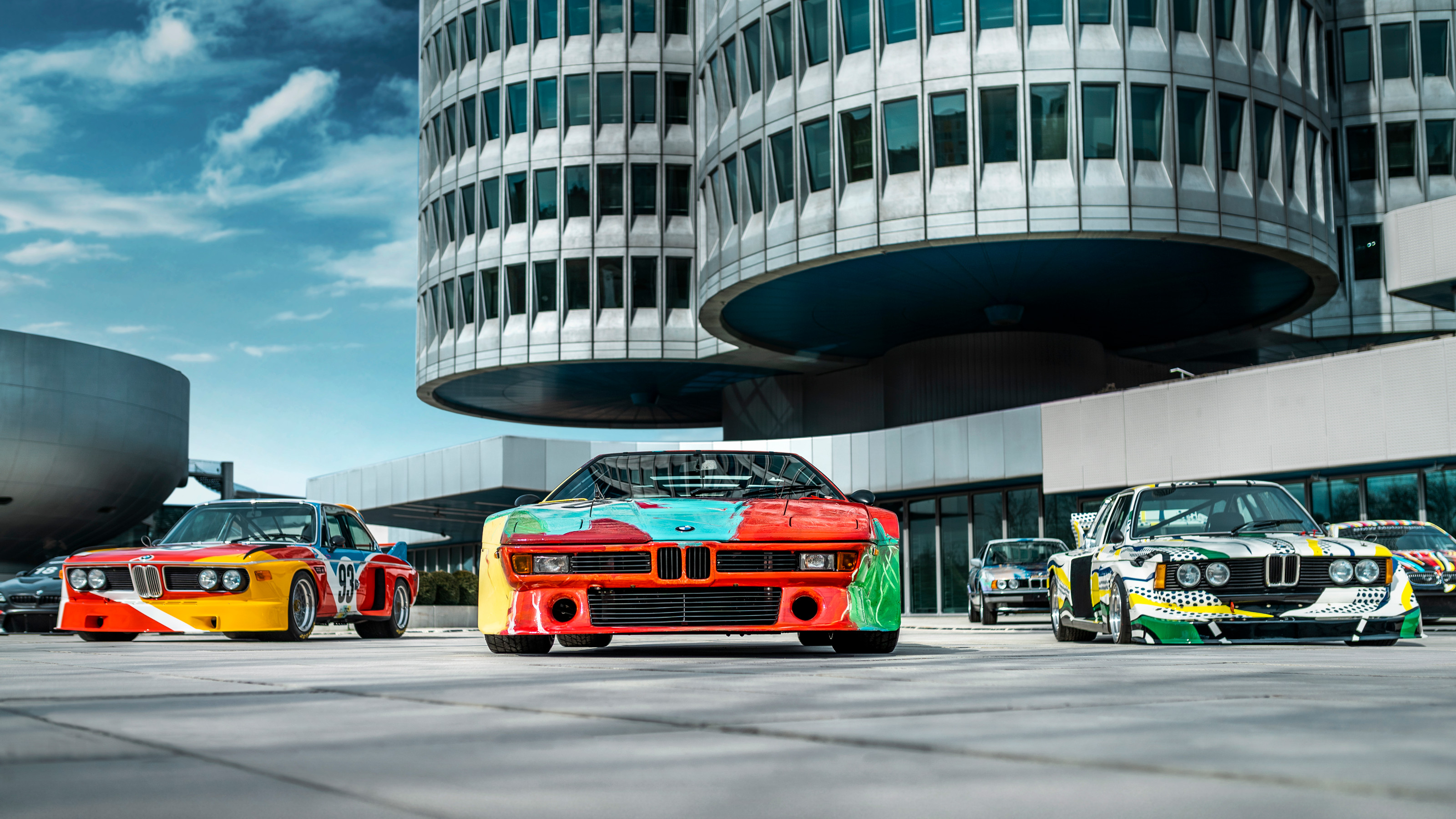 BMW celebrates half a century of its pioneering Art Car project with exhibitions and more
BMW celebrates half a century of its pioneering Art Car project with exhibitions and moreWe present a portfolio of the artists who have contributed to 50 years of BMW Art Cars, including Andy Warhol, John Baldessari, Jenny Holzer and David Hockney
-
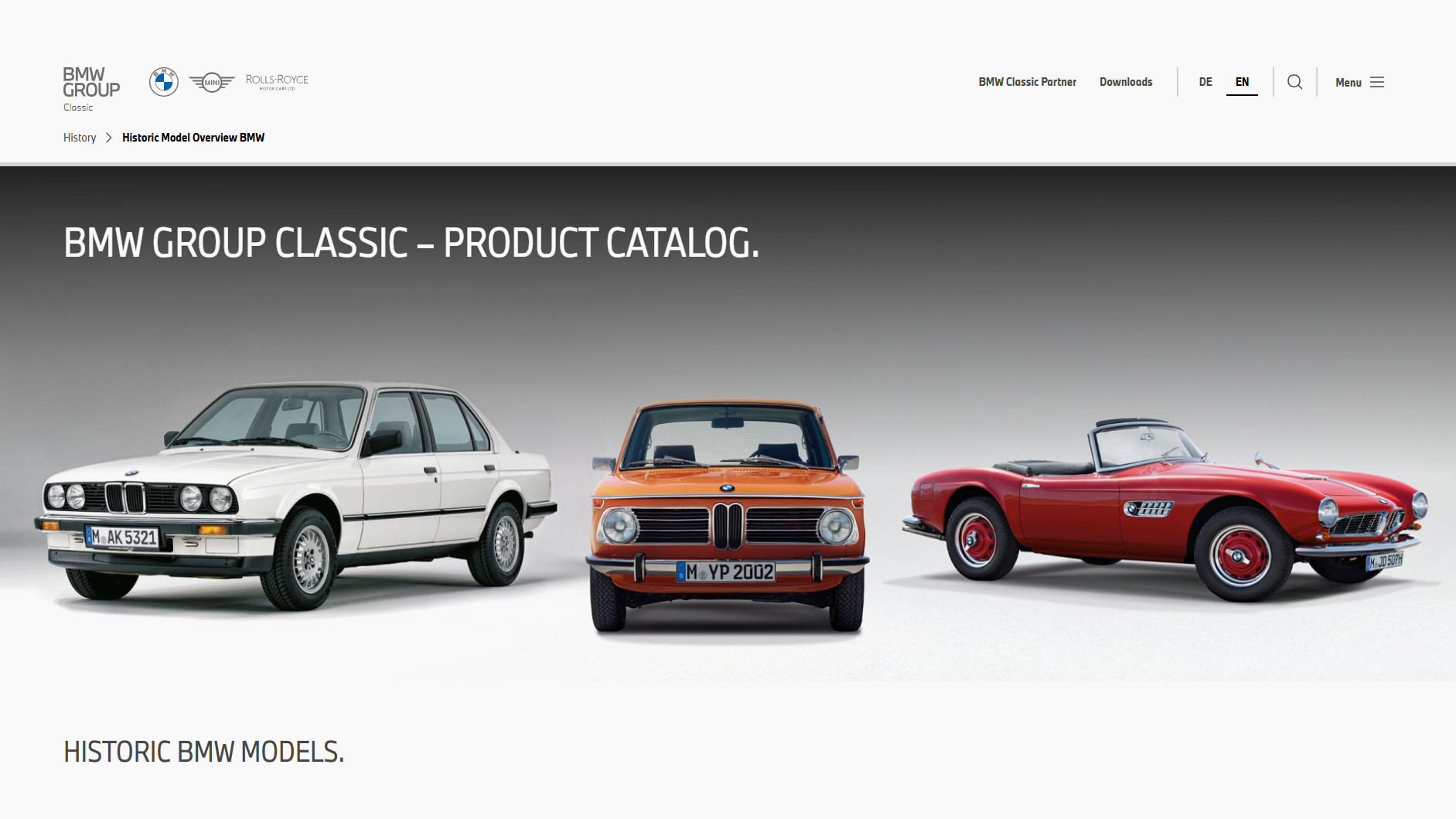 Peruse the new BMW Group Archive to explore the evolution of BMW design over the decades
Peruse the new BMW Group Archive to explore the evolution of BMW design over the decadesFor lovers of the marque, BMW’s commitment to online archiving is second to none. The latest website from the Bavarian manufacturer is this extensive visual catalogue of 80 years’ worth of BMW design
-
 The top 10 concept cars of 2024, as selected by Wallpaper’s Transport Editor
The top 10 concept cars of 2024, as selected by Wallpaper’s Transport EditorWe round up our favourite forays into futuristic design with this collection of concepts and design studies showcasing the transport of tomorrow
-
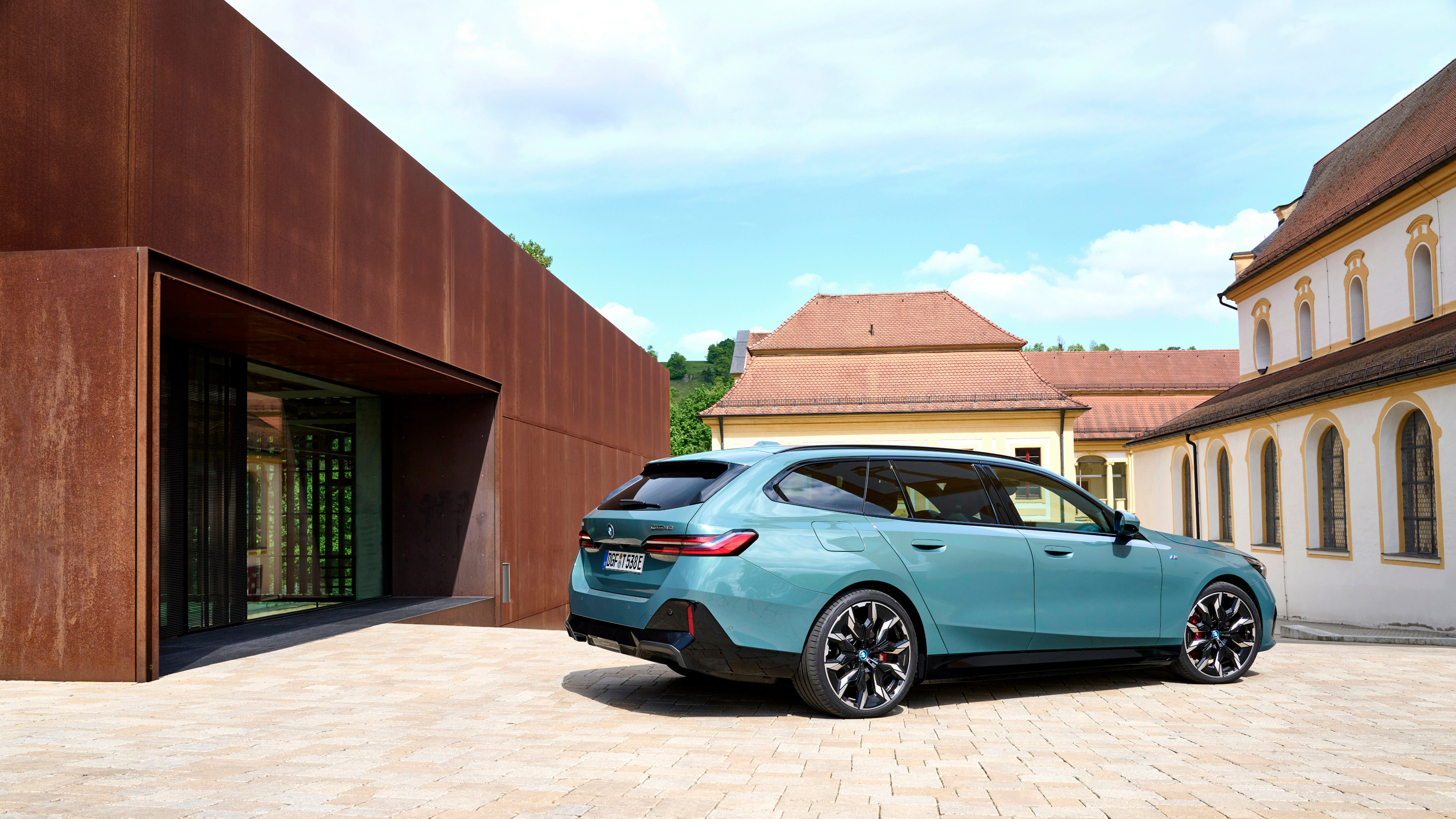 New BMW i5 Touring is an all-electric tech powerhouse that brings the noise
New BMW i5 Touring is an all-electric tech powerhouse that brings the noiseBMW has thrown its considerable expertise into making the i5 eDrive40 M Sport Pro Touring the ultimate zero-emission all-rounder. Jonathan Bell tries it out
-
 BMW’s limited-edition Skytop roadster draws on the past. Could it also predict the future?
BMW’s limited-edition Skytop roadster draws on the past. Could it also predict the future?Just 50 examples of the BMW Skytop are being built, and they’ve all been spoken for. We examine whether this classically styled machine is a harbinger of aesthetic change
-
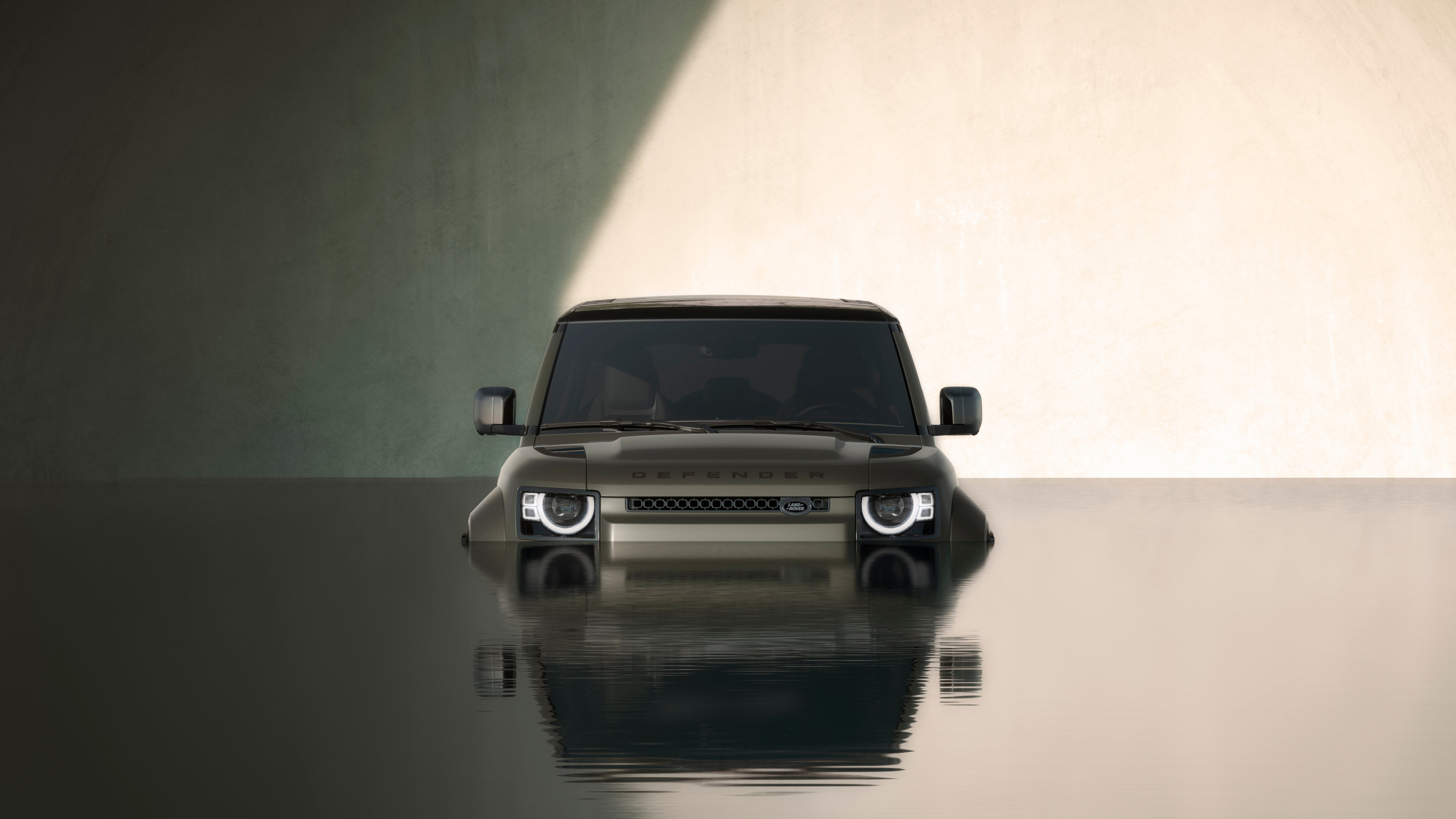 The 2024 Goodwood Festival of Speed hosted a wealth of auto innovation, from hypercars to hot hatches
The 2024 Goodwood Festival of Speed hosted a wealth of auto innovation, from hypercars to hot hatchesThe best new SUVs, EVs, hatchbacks and supercars to emerge from the 2024 Goodwood Festival of Speed
-
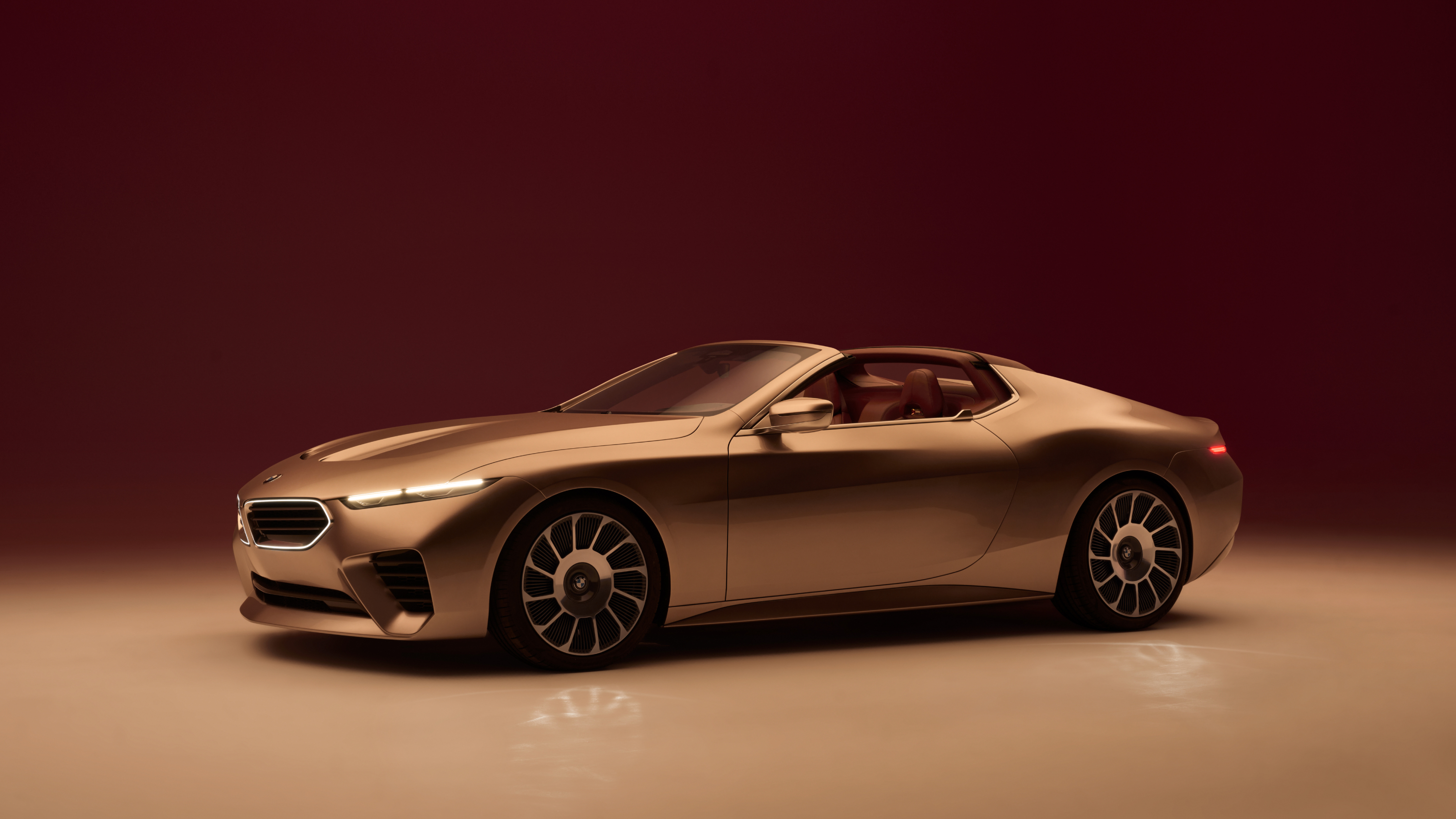 The Concept Mercedes-AMG PureSpeed and BMW Concept Skytop offer drop-top dreams
The Concept Mercedes-AMG PureSpeed and BMW Concept Skytop offer drop-top dreamsBMW and Mercedes-AMG open up with two new convertible concepts, one pitched at performance, the other at the spirit of the good life